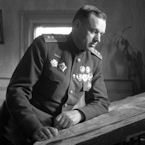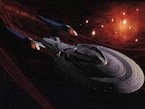Lobster
Posts: 5104
Joined: 8/8/2013
From: Third rock from the Sun.
Status: offline

|
quote:
ORIGINAL: pzgndr
I find some of these expectations amusing. For wargame scale and scope, one should consider the "two echelon rule" and game results over a period of turns. For example, playing the old PanzerBlitz or Panzer Leader boardgame. Movement from A to B was based on average movement rates and not perfect, but equal for both players. Combat with a platoon-size unit counter representing a group of tanks/squads versus another unit at some range was also based on certain averages and nowhere near perfect, but again equal for both players. What "exactly" happened to one unit during one 5-minute turn was not at all a realistic simulation, but over the course of a game scenario the overall results were considered believable. In this case, the two echelons means battalion-level operations, so for wargaming WWII battalion or brigade operations over a 1-2 hour battle, those old boardgames provided some decent results as well as some enjoyable gaming. For wargaming platoon or company firefights over 10-15 minutes, not so much.
My only point is that if you want to argue down to a gnat's ass if 'any' game results for a particular unit counter during a particular turn is perfect or realistic, then you're chasing your tail. Some aggregation and averaging is necessary for movement/combat effects at a unit scale at least two echelons below whatever you're trying to wargame. Clearly, one can go to ridicules extremes in pursuit of perfection and realism, such as trying to wargame all of WWII ETO with some massive PB/PL-scale game with platoon counters, 250m hexes, and 5-minute turns. But that would be stupid. Find a scale and scope that's most appropriate, movement and combat effects that work, and overall game results that are believable. And the wargame should be playable, and enjoyable as a game. I see far too many complex and complicated games that fail on both counts.
With today's computers and simultaneous execution of all aspects it is conceivable to run a real world simulation. It would likely take more computing power than the average user has and would not be financially practical for anyone to bother with unless there is a government contract involved. However, attempting to validate any simulation against a real world historical outcome is not likely. Far too many variables when you are talking about large numbers of individual decisions and outcomes. But there have been some examples of a simulation being validated by real world outcomes. Hurtgen Forest is one of them.
Back to circle vs square. In this universe they are different. Perhaps in some alternate universe they are somehow the same. It's the same as saying a cube and a sphere are the same. It's not even worth discussing anymore.
_____________________________
http://www.operationbarbarossa.net/ Two things are infinite: the universe and human stupidity and I’m not sure about the universe-Einstein Q: What do you call a boomerang that doesn’t come back? A: A stick.
|
 Printable Version
Printable Version













 New Messages
New Messages No New Messages
No New Messages Hot Topic w/ New Messages
Hot Topic w/ New Messages Hot Topic w/o New Messages
Hot Topic w/o New Messages Locked w/ New Messages
Locked w/ New Messages Locked w/o New Messages
Locked w/o New Messages Post New Thread
Post New Thread